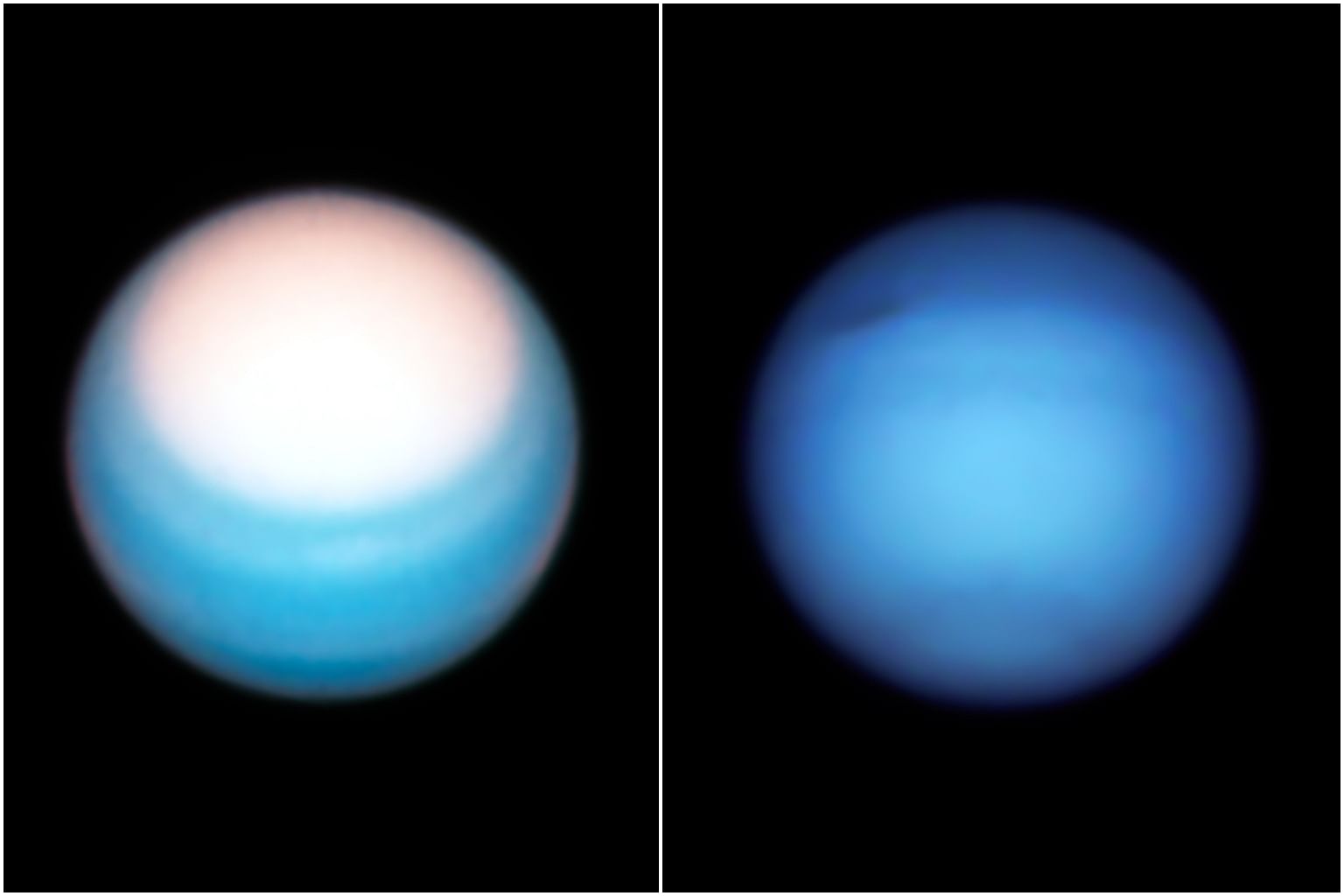NEW YORK (NYTIMES) - You don't need a weatherman to know which way the wind blows on Jupiter. All you need is the keen eyesight of the Hubble Space Telescope for a close-up look at the candy-coloured ribbons of clouds and storms on the face of the solar system's largest planet.
Every year, the Hubble is deployed to make a visual "grand tour" of Jupiter, Saturn, Uranus and Neptune. The National Aeronautics and Space Administration (Nasa) calls this the Outer Planets Atmospheres Legacy programme, and it lets planetary scientists and astronomers on Earth see what has changed and what has not in something like a cosmic weather report.
On Tuesday (Nov 23), Nasa released photos from this year's grand tour. The gallery of portraits of the planets with all their brisk stripes, ethereal rings, giant storms and raging winds bears witness to the endless ability of nature to surprise and charm us.
The results, Nasa said, will help scientists understand the dynamics of huge gas giant planets, both in our own solar system and around other stars, as well as provide insights into how Earth's atmosphere works.
And the planets are pretty to look at, too.
The most prominent feature among Jupiter's cloud tops is the Great Red Spot, an anticyclone bigger than Earth that has been swirling for more than 150 years at speeds of some 640kmh. The new observations show that the winds at the centre of the storm are continuing to slow, while the winds on the outer edges are speeding up. The spot is slowly changing its shape into a circle from an oval, and a series of new storms have formed to its south.
In the northern hemisphere of Saturn, it was early autumn when Hubble took this year's look at the ringed planet. A mysterious six-sided hurricane has reappeared around the planet's north pole. The storm, big enough to swallow four Earths, was first spotted by the Voyager spacecraft in the early 1980s. Last year, it was hard to see, but this year it has reappeared.
Farther out, it is springtime on Uranus, which goes around the sun tilted on its side relative to the other planets. This means that its north polar region is aimed right at the sun. As a result, the planet's northern latitudes are being bathed in ultraviolet light from the sun and are glowing like a light bulb.
The researchers suspect that the brightening results from changes in the concentration of methane gas - a major component of Uranus' atmosphere - and smog, as well as wind patterns around the pole.
Neptune beckons with the seductive deep blue of the ocean. But its colour comes from methane, not water. The solar system's eighth planet is also prone to storms, high-pressure regions that resemble dark blurs or bruises on its surface. They were discovered in 1989 when Voyager 2 went past Neptune, but they were not seen again until a few years later when Hubble took up its job as cosmic sentry in the 1990s.
Typically these storms appear in the mid-latitudes and drift to the planet's equator, where they weaken and then disintegrate. In 2018, Hubble spotted a massive dark spot drifting southwards toward the equatorial "killing zone", in Neptune's northern hemisphere.
Two years later, however, to the astonishment of astronomers and computer simulations, the storm had reversed course and was heading back north. Moreover, the reversal coincided with the appearance of a new, slightly smaller storm called "Dark Spot Jr" to the south - perhaps a piece of the larger vortex that had split off, taking away energy and momentum as in some cosmic billiards game.
"It was really exciting to see this one act like it's supposed to act and then all of a sudden, it just stops and swings back," said Dr Michael Wong, a research scientist at the University of California, Berkeley, in a news release from Nasa last year. "That was surprising."
In the most recent Neptune portrait, the large dark spot is still there in the north. But Junior has vanished, and the entire north pole region is dark. The Neptune weather forecasters still do not know why.

Savour these cosmic postcards while you can. The Hubble Space Telescope has been up there for more than 30 years, long past its planned service life, and it has been having frequent troubles lately. Three times this year, the telescope endured extended shutdowns because of software problems.
But there is potentially good news coming with the scheduled launch of the James Webb Space Telescope in December.
The Webb telescope is almost three times bigger than Hubble. It is designed to see infrared or "heat" radiation, rather than visible wavelengths, and thus can see through the clouds and hazes of these planets and map the heat below, shedding light, so to speak, on how these planets work.
For a while anyway, if all goes well - and things have not always gone well - astronomers could have two complementary ways of understanding what is going on out there.
And that is the weather report from the outer planets. It's windy out there, and don't forget to wear your strongest sunblock on Uranus.

